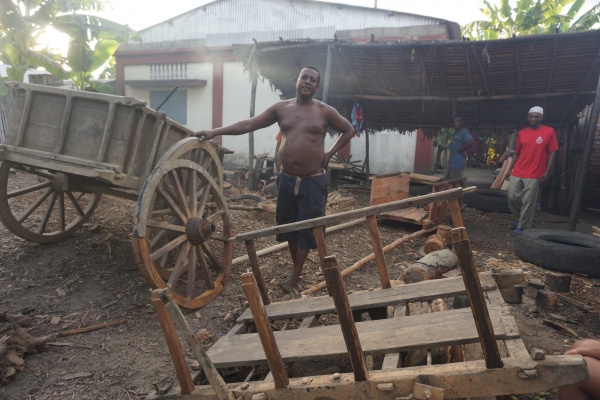Difference between revisions of "Zebu cart"
CampMaster (talk | contribs) (Tags: Mobile edit, Mobile web edit) |
CampMaster (talk | contribs) (Tags: Mobile edit, Mobile web edit) |
||
| Line 1: | Line 1: | ||
| − | '''The sunrise over the Sambirano Valley typically coincides with a small traffic jam on the bridge leading into the town centre of Ambanja. This congestion is not caused by cars but by slow-moving zebu carts. The drivers and passengers of these ox-powered | + | '''The sunrise over the Sambirano Valley typically coincides with a small traffic jam on the bridge leading into the town centre of Ambanja. This congestion is not caused by cars but by slow-moving zebu carts. The drivers and passengers of these ox-powered vehicles are transporting their crops from the countryside to the town's central marketplace.''' |
<!-- | <!-- | ||
It's sunrise in Sambirano and a small traffic jam has evolved at the bridge crossing, not by cars, but by zebu carts slowly crossing the narrow bridge in Ambanja. The drivers and passengers of these ox-powered vehicles, mostly farmers, started travelling in darkness to reach the central marketplace by the early morning hours to distribute their crops.' | It's sunrise in Sambirano and a small traffic jam has evolved at the bridge crossing, not by cars, but by zebu carts slowly crossing the narrow bridge in Ambanja. The drivers and passengers of these ox-powered vehicles, mostly farmers, started travelling in darkness to reach the central marketplace by the early morning hours to distribute their crops.' | ||
Revision as of 09:30, 19 August 2024
The sunrise over the Sambirano Valley typically coincides with a small traffic jam on the bridge leading into the town centre of Ambanja. This congestion is not caused by cars but by slow-moving zebu carts. The drivers and passengers of these ox-powered vehicles are transporting their crops from the countryside to the town's central marketplace.
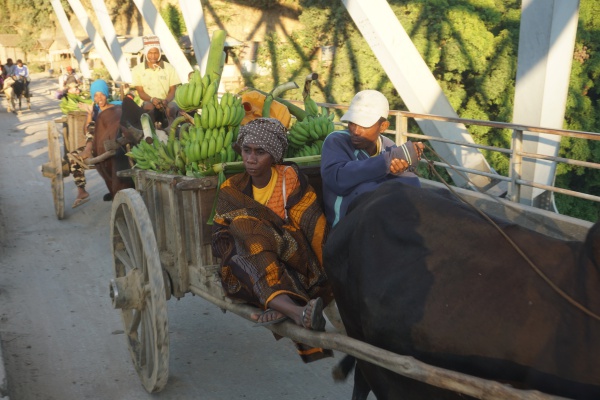
| ||
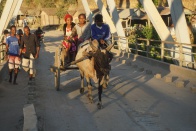
|

|

|
Zebu carts, known as Charrettes à zébu, are common in and around Ambanja and across much of the country.
Dozens of workshops produce charrettes in Ambanja. One of them is led by Mr Theodore, who, along with his team of six skilled carpenters, manually assembles around 50 charrettes per year without using electrical power tools.
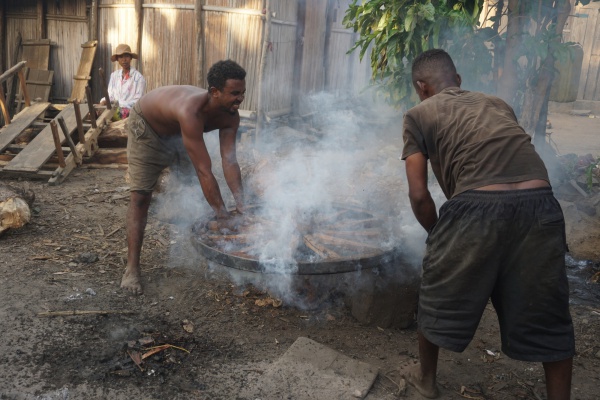
| ||
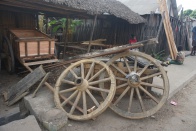
|
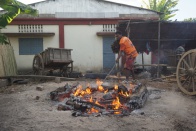
|
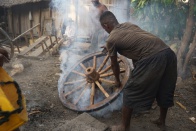
|

|
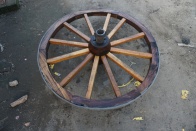
|
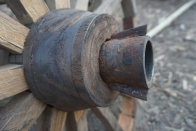
|
The design and model are always the same: A simple two-wheeler that easily attaches to one or more zebus.
These charrettes remain as practical and relevant among farmers today as they have for hundreds of years.
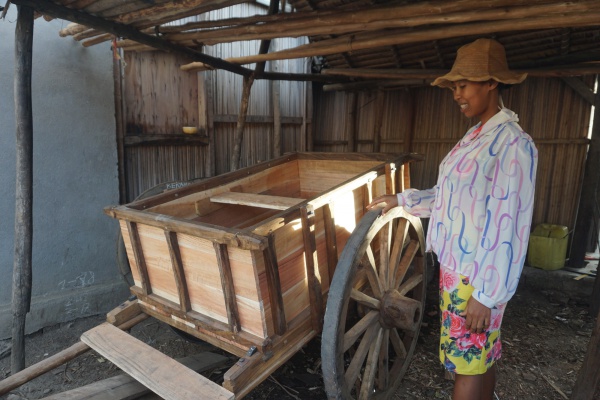
| ||
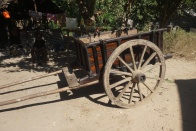
|
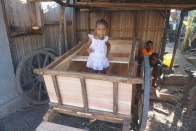
|
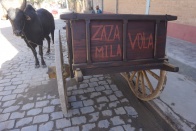
|
A charrette takes about one week to build and costs 1,800,000 Ariary (USD 400).
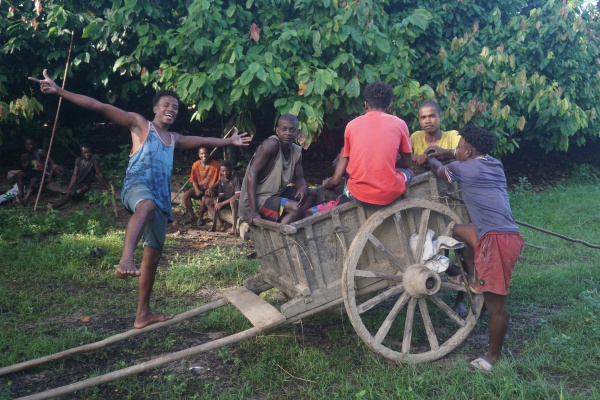
| ||
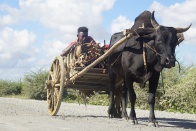
|
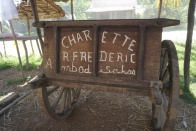
|
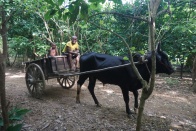
|
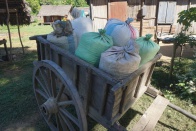
|

|
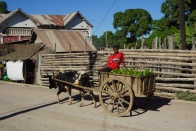
|
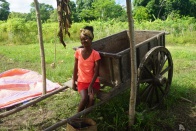
|
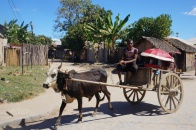
|
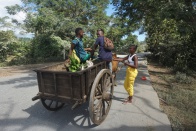
|

| ||
Thanks to the thousands of Malagasy farmers for preserving the environment by their traditional mode of transportation.
Additional information
View more Zebu cart photos
